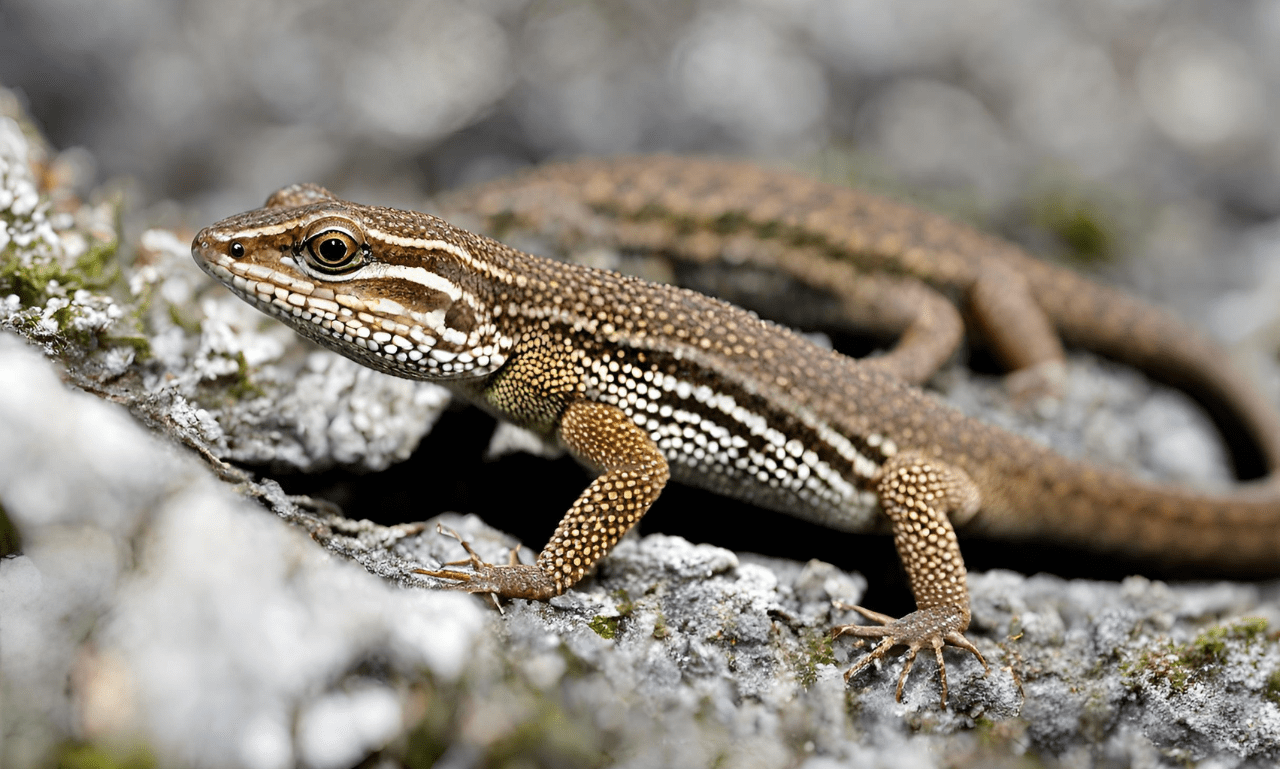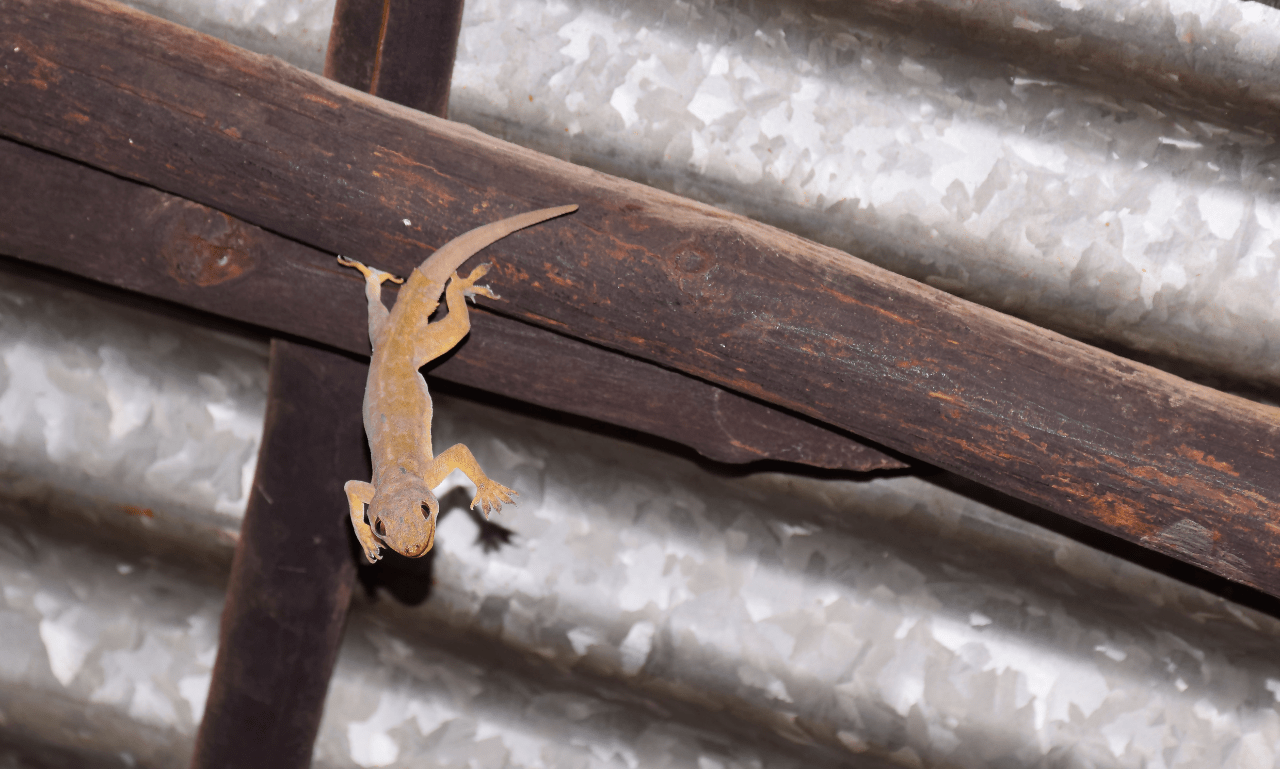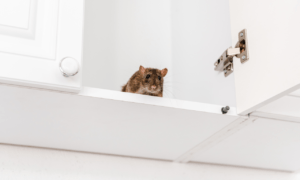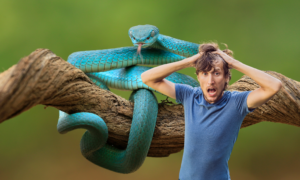Introduction
The Fascinating Behavior of Lizards
Lizards are known for their intriguing behaviors, and one of the most captivating is their ability to play dead when confronted by predators or threats. This survival tactic has fascinated researchers and lizard enthusiasts alike, leading to questions about how long this behavior lasts and what triggers it.
Exploring the Phenomenon of Lizards Playing Dead
In this article, we’ll delve into the phenomenon of lizards playing dead. We’ll not only discuss the factors that influence the duration of this behavior but also explore various lizard species and their unique ‘playing dead’ times. By the end, you’ll have a deeper understanding of this remarkable defense mechanism.

Understanding Lizard Defensive Strategies
A Look at Lizard Survival Tactics
Lizards have developed a range of survival tactics to protect themselves from predators. These tactics often include camouflage, fast escapes, and the subject of our discussion, playing dead. By appearing lifeless, lizards hope to discourage predators and evade danger.
The ‘Playing Dead’ Phenomenon as a Defense Mechanism
Playing dead is a clever defense mechanism used by some lizard species. When threatened, they go limp, slow their breathing, and sometimes release a foul odor to mimic death. This behavior can be effective in deterring predators, but the duration varies depending on several factors.
The Science Behind Playing Dead
Lizards that employ this tactic often do so as a last resort when they feel cornered and unable to escape. The science behind playing dead is fascinating. It is essentially a survival strategy evolved over millions of years, and it relies on the predator’s instincts.
- Predator Confusion: When a lizard plays dead, it confuses its predator. Most predators are hardwired to detect movement, so a motionless lizard may no longer register as prey. This momentary hesitation can give the lizard a chance to escape.
- Reduced Stress Levels: Playing dead allows the lizard to lower its stress levels. When threatened, the lizard’s body releases stress hormones, which can be harmful in excess. By feigning death, the lizard reduces these hormone levels, potentially increasing its chances of survival.
- Predator’s Distaste: Some lizards take it a step further by emitting a foul odor or tasting unpalatable to predators. This not only makes them less appealing as a meal but also reinforces the illusion of death.
Duration and Variability
The effectiveness of playing dead can vary widely among different lizard species. Some lizards may only maintain this act for a few moments, while others can keep it up for several minutes. Several factors influence the duration and success of this tactic:
- Predator Type: The response of predators to a “dead” lizard can differ. Some may quickly lose interest, while others may investigate further before deciding whether to continue their pursuit or move on.
- Lizard Species: Different lizard species have evolved various adaptations for playing dead. Some are exceptionally skilled at it, while others may not use this strategy at all.
- Environmental Conditions: The lizard’s surroundings also play a role. In dense vegetation, for instance, a predator might have a harder time spotting a motionless lizard, increasing its chances of survival.
- Predator Experience: The predator’s experience with playing dead lizards can affect the outcome. If they’ve encountered lizards employing this tactic before and realized it was a ruse, they might not be as easily fooled the next time.

Factors Influencing the Duration
What Determines How Long a Lizard ‘Plays Dead’?
The duration of a lizard’s ‘playing dead’ act can be influenced by multiple factors. These include the species of lizard, the type of predator or threat, and the lizard’s individual physiology. Let’s explore how these elements impact how long a lizard maintains this behavior.
Variations in Duration Among Different Lizard Species
Different lizard species have evolved distinct defensive strategies, and the duration of ‘playing dead’ behavior can differ significantly between them. Some lizards may ‘play dead’ for only a few minutes, while others can maintain the act for hours. Understanding these variations is crucial to unraveling the mystery of this behavior.
Species-Specific Strategies
Lizards have evolved a wide range of survival mechanisms, and ‘playing dead’ is just one of them. For some species, such as the Eastern Fence Lizard (Sceloporus undulatus), ‘playing dead’ is a brief and desperate last resort. When threatened, they may go limp and unresponsive for just a few minutes, hoping the predator loses interest and leaves. On the other hand, the Texas Horned Lizard (Phrynosoma cornutum) is known for its remarkable endurance in this act. It can remain motionless for up to several hours, making it a true master of this survival strategy.
These differences in duration are often linked to the ecological niche and natural predators of each species. Lizards that typically encounter quick and opportunistic predators tend to ‘play dead’ for shorter durations, as it’s essential for them to resume normal activity as soon as possible to escape danger. In contrast, lizards facing less immediate threats may maintain the act for a longer time, banking on the hope that the predator will eventually lose interest.
Predator Influence
The type of predator or threat a lizard faces plays a pivotal role in determining how long it ‘plays dead.’ When confronted by a visually oriented predator like a bird, the lizard might employ a shorter duration of ‘playing dead’ because any sudden movement could give away its ruse. In contrast, when dealing with a predator that relies more on scent or movement detection, such as a snake, the lizard may prolong its act since sudden movements might not trigger the same response.
Individual Physiology
Another factor influencing the duration of ‘playing dead’ is the lizard’s individual physiology. Just like humans have varying endurance levels, lizards too can differ in their ability to maintain this behavior. Factors such as age, health, and even prior experiences with predators can affect how long a lizard can convincingly ‘play dead.’ A healthier, more robust lizard might endure the stress of feigning death for a longer time compared to a weaker or sickly one.
Environmental Factors
Environmental conditions, such as temperature and humidity, can also impact the duration of this behavior. In cooler temperatures, a lizard’s metabolic rate decreases, potentially allowing it to ‘play dead’ for longer periods. On the other hand, in hot and arid environments, lizards might need to conserve energy and moisture, prompting them to keep the act relatively short.
The duration of a lizard’s ‘playing dead’ act is a complex interplay of various factors. Different lizard species have evolved species-specific strategies, influenced by their natural predators and ecological niches. Individual lizard physiology, including health and prior experiences, also contributes to how long they can convincingly maintain this behavior. Additionally, environmental conditions play a role in determining the lizard’s endurance. Studying these factors provides valuable insights into the fascinating world of lizard behavior and survival strategies. In the next chapter, we will delve deeper into the evolutionary aspects of ‘playing dead’ in lizards, shedding light on why this behavior has persisted through millennia.

Common Lizard Species and Their ‘Playing Dead’ Times
In-Depth Study of Lizard Species and Their Survival Techniques
To truly grasp the intricacies of how long lizards ‘play dead,’ it is crucial to delve into the behaviors of specific lizard species. In this chapter, we will embark on an enlightening journey, exploring some of the most common lizard species renowned for their ‘playing dead’ tactics. By doing so, we hope to shed light on the typical duration of their deceptive acts when confronted with potential threats.
Discovering How Long Various Lizards Mimic Death
Horned Lizard (Phrynosoma spp.)
Duration: Horned lizards are perhaps the most renowned for their incredible acting skills when it comes to feigning death. When confronted with a predator, they may initially freeze and then suddenly collapse, falling to the ground in a lifeless manner. This charade can last anywhere from a few seconds to several minutes. The exact duration often depends on the perceived threat level and the persistence of the attacker.
Eastern Collared Lizard (Crotaphytus collaris)
Duration: The eastern collared lizard is another master of the ‘playing dead’ game. When danger looms, these lizards might remain motionless on their backs, limbs splayed out in a convincing portrayal of death. Typically, they maintain this act for a brief period, usually ranging from 30 seconds to a couple of minutes. However, in some cases, they may hold their act for a bit longer if they sense the threat is not subsiding.
Texas Horned Lizard (Phrynosoma cornutum)
Duration: Like their horned lizard relatives, Texas horned lizards are adept at playing dead when confronted by predators. They tend to engage in this deceptive behavior for approximately 1 to 5 minutes, depending on the circumstances. Their survival strategy hinges on convincing their attacker that they are not worth pursuing, and the duration can vary accordingly.
Southern Alligator Lizard (Elgaria multicarinata)
Duration: Southern alligator lizards are known to employ the ‘playing dead’ tactic, although they are less famous for it compared to horned lizards. These lizards may stay immobile for anywhere between 30 seconds to a few minutes when facing a potential threat. The duration often relies on the lizard’s assessment of the danger and the presence of the perceived predator.
Desert Iguana (Dipsosaurus dorsalis)
Duration: Desert iguanas, found in arid regions of the southwestern United States and Mexico, can ‘play dead’ for around 2 to 5 minutes when confronted by a predator. Their act is convincing, and they use it as a last resort to avoid becoming a meal for their assailant.
It’s important to note that the duration of ‘playing dead’ behaviors can be influenced by various factors, such as the lizard’s age, health, and experience with predators. Additionally, some individuals within a species may be more skilled at this survival tactic than others.

Environmental Impact on Playing Dead
The Role of Environment in Lizard Defensive Behavior
Environmental factors play a significant role in influencing the duration of a lizard’s ‘playing dead’ act. In this chapter, we will delve deeper into how temperature, humidity, terrain, and other environmental elements impact this intriguing behavior.
How Temperature, Predators, and Other Factors Affect the Duration
Temperature, as one of the most influential environmental factors, can greatly affect a lizard’s ability to play dead. Cold temperatures tend to extend the duration of the act. Lizards are ectothermic, meaning their body temperature is regulated by their surroundings. In colder weather, their metabolic processes slow down, and this includes their ability to recover from a state of tonic immobility, or ‘playing dead.’ Consequently, in chilly conditions, a lizard may remain motionless for a longer period of time to conserve energy and increase its chances of survival.
On the other hand, warmer conditions might prompt a quicker recovery. When the lizard senses a rise in temperature, it may interpret this as a cue that it’s safe to become active again. This can be a vital strategy in environments with rapid temperature fluctuations, where staying immobile for extended periods might be detrimental.
The presence of specific predators or threats can also influence how long a lizard remains motionless. Lizards have evolved to recognize and respond to various cues from their environment. When a known predator is nearby, they might stay immobile for longer periods of time to avoid detection. This extended stillness can serve as a survival tactic, as some predators lose interest in prey that appears lifeless. In contrast, if a lizard perceives a reduced threat or the absence of known predators, it may recover more rapidly to resume its normal activities.
Additionally, the type of terrain and habitat play a role in how lizards employ their ‘playing dead’ behavior. Lizards are highly adapted to their specific environments, and the choice of when and how long to play dead can depend on the topography and vegetation. In open terrain where escape options are limited, a lizard might opt for longer tonic immobility to minimize the chances of being spotted. Conversely, in dense vegetation where hiding is more feasible, they might choose to recover sooner and seek shelter.
Humidity levels are another environmental factor worth considering. Some lizard species are more prone to tonic immobility in response to increased humidity, while others exhibit this behavior more frequently in drier conditions. The influence of humidity on ‘playing dead’ is species-specific and tied to the lizard’s natural habitat.
In summary, the duration of a lizard’s ‘playing dead’ act is intricately connected to its environment. Temperature, humidity, the presence of predators, and terrain all contribute to shaping this fascinating defensive behavior. Understanding these environmental influences not only provides insights into lizard survival strategies but also underscores the incredible adaptability of these remarkable creatures in their ever-changing surroundings.

Witnessing the Marvel: Observations and Insights
Real-Life Encounters and Observations
In the world of wildlife, there are few behaviors as captivating and perplexing as a lizard’s ability to “play dead.” Over the years, many nature enthusiasts and dedicated researchers have been fortunate enough to witness this remarkable phenomenon in the lizards’ natural habitats. In this chapter, we delve into real-life encounters and observations, providing a comprehensive look into the duration and effectiveness of this fascinating behavior.
1. The Desert Mirage:
One of the most striking observations of lizards “playing dead” comes from the arid deserts of the American Southwest. Herpetologist Dr. Sarah Rodriguez recounts an encounter with a collared lizard. As she approached, the lizard suddenly froze, its body limp and lifeless. It lay there for what seemed like an eternity, while Dr. Rodriguez cautiously observed. To her amazement, the lizard eventually sprang to life, darting away in an impressive display of its survival strategy. This incident left her awestruck by the lizard’s acting skills and the effectiveness of its mimicry.
2. The Forest Floor Drama:
In the lush rainforests of Southeast Asia, photographer and naturalist Mark Turner had a close encounter with a green tree monitor lizard. This slender reptile, known for its vibrant green coloration, suddenly collapsed when Mark approached. He took the opportunity to document the lizard’s “death act” through his lens. Much to his surprise, the lizard remained motionless for nearly twenty minutes before cautiously resuming its normal activities. This observation revealed the lizard’s impressive patience in executing this defense mechanism, possibly to wait for potential threats to lose interest.
3. The Urban Oasis Surprise:
Lizards are known for their adaptability, even in urban environments. Jane Mitchell, a city-dwelling biologist, encountered a Mediterranean house gecko on her balcony. Startled by her presence, the gecko went limp, falling to the ground and even sticking out its tongue, imitating death to the best of its abilities. Jane watched in awe as the gecko held this position for several minutes before cautiously crawling away. This observation highlighted the lizard’s ability to employ its “playing dead” tactic even in non-natural surroundings.
4. The Coral Coast Revelation:
On the picturesque shores of Australia’s Coral Coast, marine biologist Chris Evans had a memorable encounter with a frilled-neck lizard. As he approached this unique reptile, known for its impressive frilled collar display, the lizard put on quite a show. It puffed up its frill, hissed loudly, and then, as if on cue, collapsed onto the rocky terrain. Chris watched intently as the lizard remained motionless for nearly half an hour. This extended duration of “playing dead” left him astounded and showcased the lizard’s unwavering commitment to its survival strategy.
5. The Camouflage Masters:
One common thread among these encounters is the duration of the “playing dead” act. Lizards often remain still and lifeless for varying lengths of time, ranging from minutes to nearly an hour in some cases. This extended duration allows them to wait out potential threats, ensuring their safety until they feel it’s safe to move again. Such observations emphasize the effectiveness of this deceptive behavior in deterring predators.
Through these stories and anecdotes, we’ve painted a vivid picture of lizards in action, exhibiting their remarkable ability to mimic death. These real-life encounters provide a deeper understanding of the duration and effectiveness of this captivating phenomenon. In the following chapter, we will explore the scientific explanations and theories behind this intriguing behavior, shedding light on the evolutionary advantages it confers upon these incredible reptiles.
.
Conclusion
Demystifying Lizards’ Survival Tactics
In conclusion, this comprehensive exploration has shed light on how long lizards ‘play dead’ and the myriad factors that influence this behavior. While the duration can vary widely among species and situations, one thing remains clear: the ‘playing dead’ act is a remarkable adaptation that underscores the ingenuity of these reptiles.
Gaining a Deeper Understanding of How Long Lizards ‘Play Dead’
By delving into the intricacies of lizard defensive strategies and the environmental factors at play, we’ve gained valuable insights into the duration of this behavior. Lizards continue to be a source of fascination and wonder, reminding us of the incredible diversity of life on our planet.
If you’ve ever wondered about the challenges of maintaining a clean pet environment, you might find our article on Bugs in Litter Box: How to Deal and Prevent’ quite enlightening.















